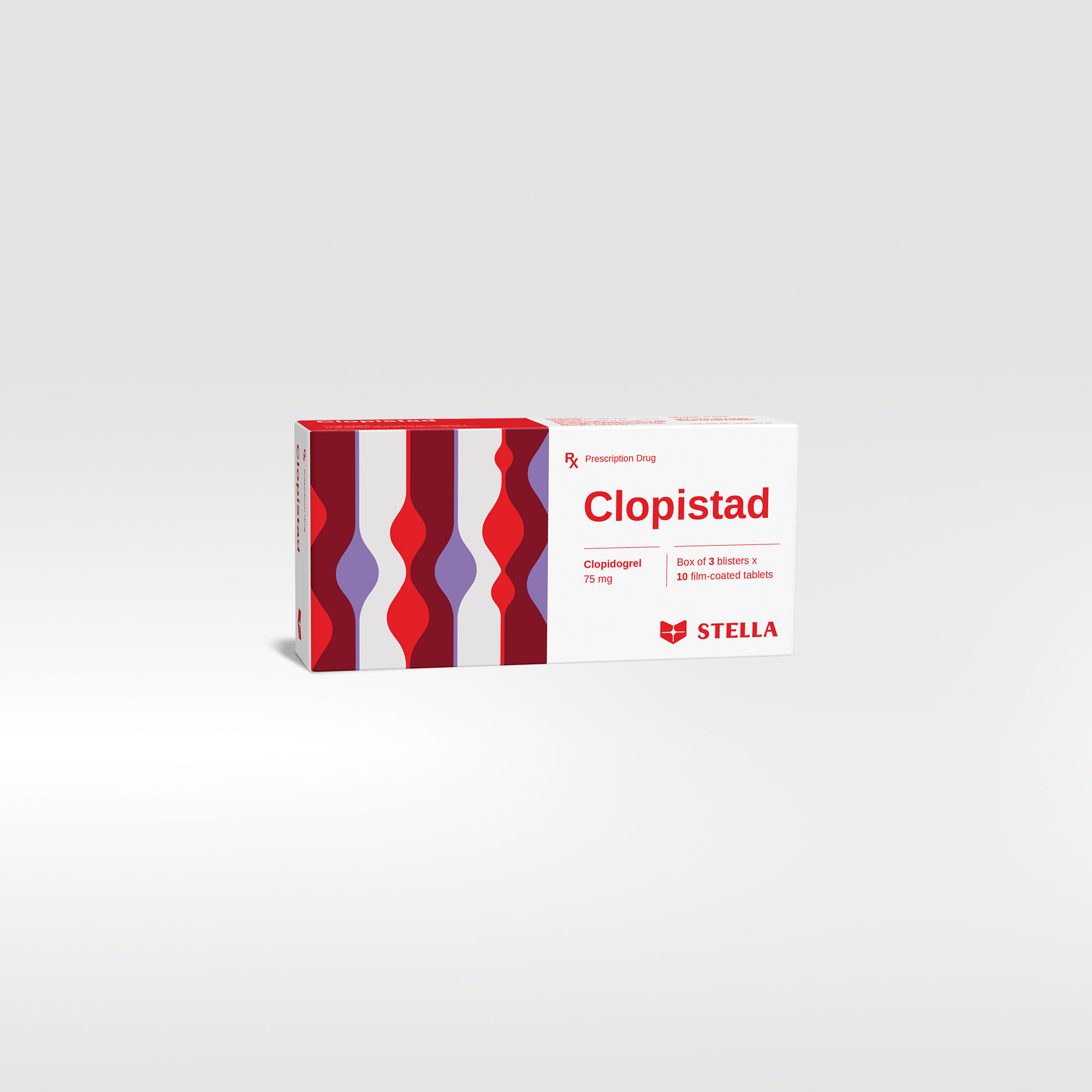Bleeding and haematological disorders
Due to the risk of bleeding and haematological adverse reactions, blood cell count determination and/or other appropriate testing should be promptly considered whenever clinical symptoms suggestive of bleeding arise during the course of treatment. As with other antiplatelet agents, clopidogrel should be used with caution in patients who may be at risk of increased bleeding from trauma, surgery or other pathological conditions and in patients receiving treatment with ASA, heparin, glycoprotein IIb/IIIa inhibitors or non-steroidal anti-inflammatory drugs (NSAIDs) including Cox-2 inhibitors, or selective serotonin reuptake inhibitors (SSRIs), or CYP2C19 strong inducers or other medicinal products associated with bleeding risk such as pentoxifylline. Patients should be followed carefully for any signs of bleeding including occult bleeding, especially during the first weeks of treatment and/or after invasive cardiac procedures or surgery. The concomitant administration of clopidogrel with oral anticoagulants is not recommended since it may increase the intensity of bleedings.
If a patient is to undergo elective surgery and antiplatelet effect is temporarily not desirable, clopidogrel should be discontinued 7 days prior to surgery. Patients should inform physicians and dentists that they are taking clopidogrel before any surgery is scheduled and before any new medicinal product is taken. Clopidogrel prolongs bleeding time and should be used with caution in patients who have lesions with a propensity to bleed (particularly gastrointestinal and intraocular).
Patients should be told that it might take longer than usual to stop bleeding when they take clopidogrel (alone or in combination with ASA), and that they should report any unusual bleeding (site or duration) to their physician.
The use of clopidogrel 600 mg loading dose is not recommended in patients with non-ST segment elevation acute coronary syndrome and ≥ 75 years of age due to increased bleeding risk in this population.
Thrombotic thrombocytopenic purpura (TTP)
Thrombotic thrombocytopenic purpura (TTP) has been reported very rarely following the use of clopidogrel, sometimes after a short exposure. It is characterised by thrombocytopenia and microangiopathic haemolytic anaemia associated with either neurological findings, renal dysfunction or fever. TTP is a potentially fatal condition requiring prompt treatment including plasmapheresis.
Acquired haemophilia
Acquired haemophilia has been reported following use of clopidogrel. In cases of confirmed isolated activated partial thromboplastin time (aPTT) prolongation with or without bleeding, acquired haemophilia should be considered. Patients with a confirmed diagnosis of acquired haemophilia should be managed and treated by specialists, and clopidogrel should be discontinued.
Recent ischaemic stroke
– Initiation of therapy: In acute minor IS or moderate to high-risk TIA patients, dual antiplatelet therapy (clopidogrel and ASA) should be started no later than 24 hours after the event onset. There is no data regarding the benefit-risk of short-term dual antiplatelet therapy in acute minor IS or moderate to high-risk TIA patients, with a history of (non-traumatic) intracranial haemorrhage. In non-minor IS patients, clopidogrel monotherapy should be started only after the first 7 days of the event.
– Non-minor IS patients (NIHSS > 4): In view of the lack of data, use of dual antiplatelet therapy is not recommended.
– Recent minor IS or moderate to high-risk TIA in patients for whom intervention is indicated or planned.
There is no data to support the use of dual antiplatelet therapy in patients for whom treatment with carotid endarterectomy or intravascular thrombectomy is indicated, or in patients planned for thrombolysis or anticoagulant therapy. Dual antiplatelet therapy is not recommended in these situations.
Cytochrome P450 2C19 (CYP2C19)
Pharmacogenetics: In patients who are poor CYP2C19 metabolisers, clopidogrel at recommended doses forms less of the active metabolite of clopidogrel and has a smaller effect on platelet function. Tests are available to identify a patient’s CYP2C19 genotype.
Since clopidogrel is metabolised to its active metabolite partly by CYP2C19, use of medicinal products that inhibit the activity of this enzyme would be expected to result in reduced levels of the active metabolite of clopidogrel. The clinical relevance of this interaction is uncertain. As a precaution concomitant use of strong or moderate CYP2C19 inhibitors should be discouraged.
Use of medicinal products that induce the activity of CYP2C19 would be expected to result in increased drug levels of the active metabolite of clopidogrel and might potentiate the bleeding risk. As a precaution concomitant use of strong CYP2C19 inducers should be discouraged.
CYP2C8 substrates
Caution is required in patients treated concomitantly with clopidogrel and CYP2C8 substrate medicinal products.
Cross-reactions among thienopyridines
Patients should be evaluated for history of hypersensitivity to thienopyridines (such as clopidogrel, ticlopidine, prasugrel) since cross-reactivity among thienopyridines has been reported. Thienopyridines may cause mild to severe allergic reactions such as rash, angioedema, or haematological cross-reactions such as thrombocytopaenia and neutropaenia. Patients who had developed a previous allergic reaction and/or haematological reaction to one thienopyridine may have an increased risk of developing the same or another reaction to another thienopyridine. Monitoring for signs of hypersensitivity in patients with a known allergy to thienopyridines is advised.
Renal impairment: Therapeutic experience with clopidogrel is limited in patients with renal impairment. Therefore clopidogrel should be used with caution in these patients.
Hepatic impairment: Experience is limited in patients with moderate hepatic disease who may have bleeding diatheses. Clopidogrel should therefore be used with caution in this population.
Clopistad contains lactose. Patients with rare hereditary problems of galactose intolerance, total lactase deficiency or glucose-galactose malabsorption should not take this medicine.
Clopistad contains hydrogenated castor oil. May cause stomach upset and diarrhoea.
Pregnancy: As no clinical data on exposure to clopidogrel during pregnancy are available, it is preferable not to use clopidogrel during pregnancy as a precautionary measure.
Lactation: It is unknown whether clopidogrel is excreted in human breast milk. Animal studies have shown excretion of clopidogrel in breast milk. As a precautionary measure, breast-feeding should not be continued during treatment with clopidogrel.
Clopidogrel has no or negligible influence on the ability to drive and use machines.






